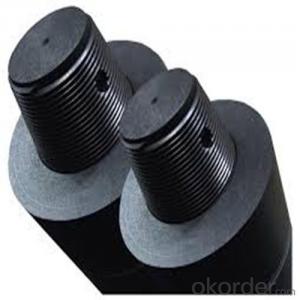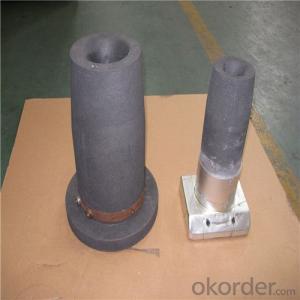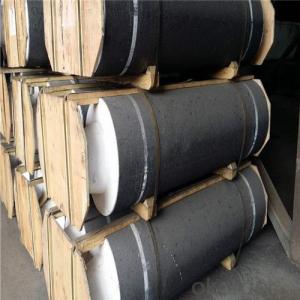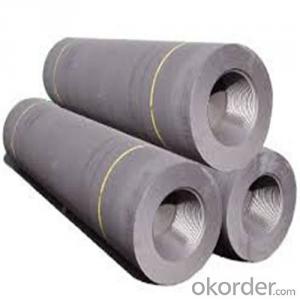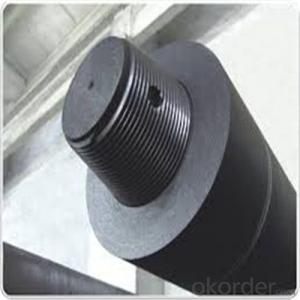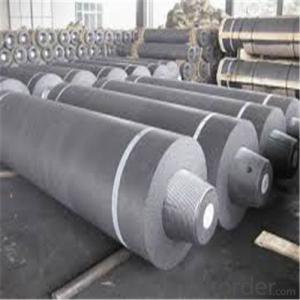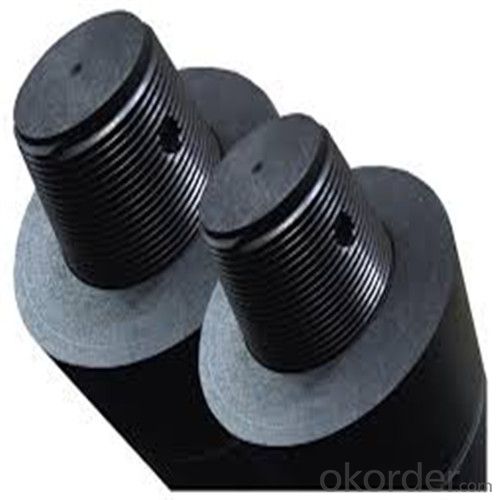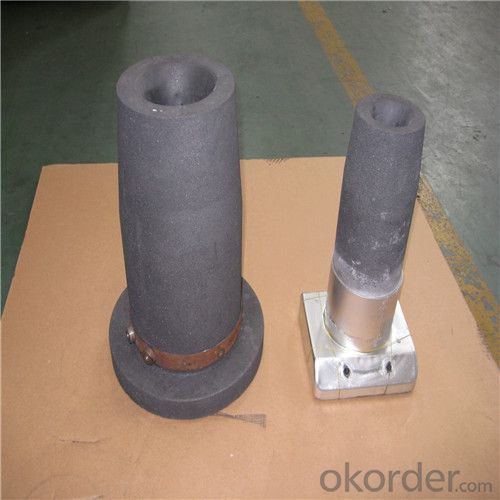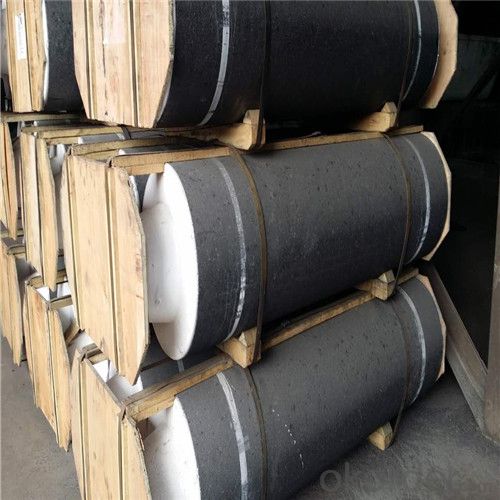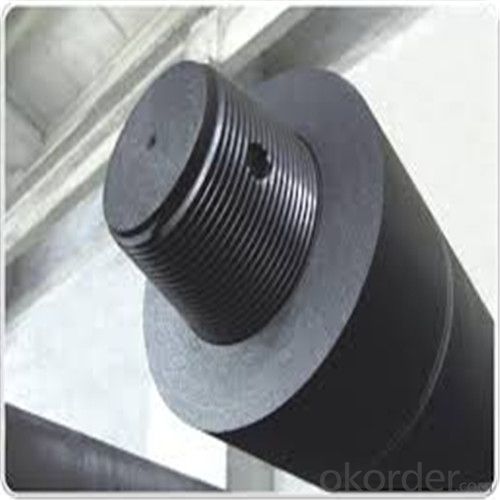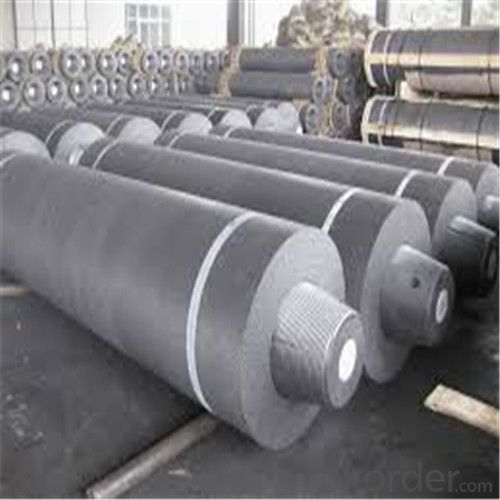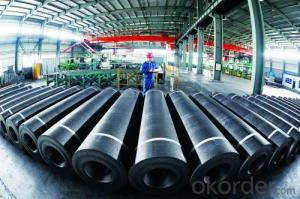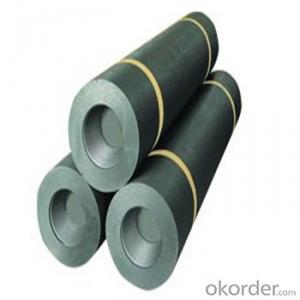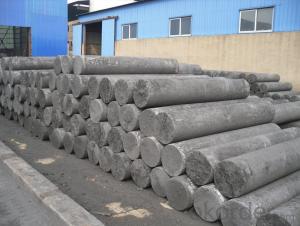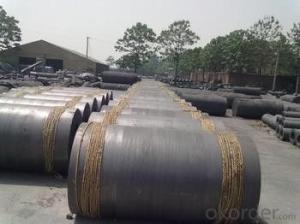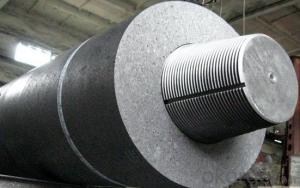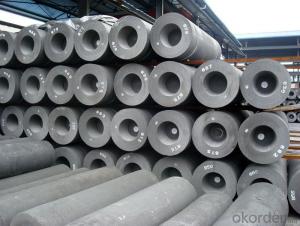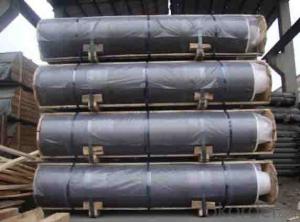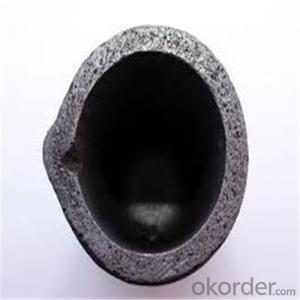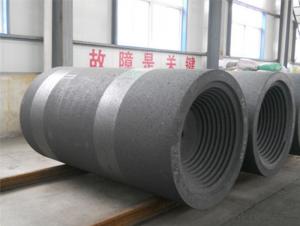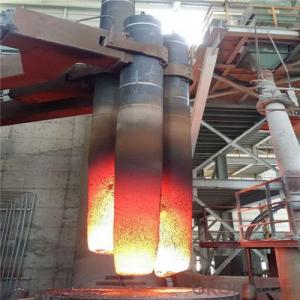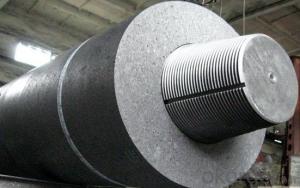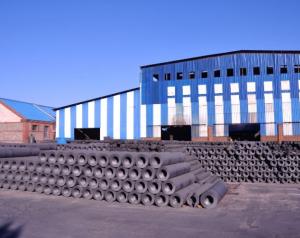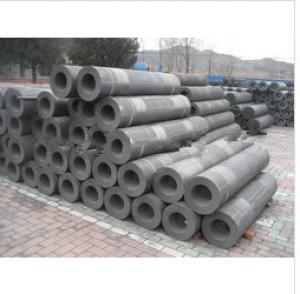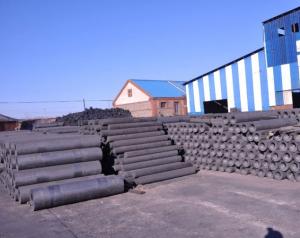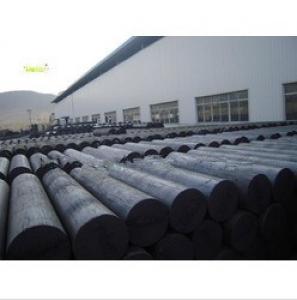High Purity Industrial Graphite Electrode for Smelting Zinc 2024
- Loading Port:
- Shanghai
- Payment Terms:
- TT or LC
- Min Order Qty:
- 10 m.t.
- Supply Capability:
- 1000 m.t./month
OKorder Service Pledge
OKorder Financial Service
You Might Also Like
Quick Details for High Purity Graphite Electrode for Smelting Zinc 2015
| Place of Origin: | China (Mainland) | Brand Name: | Application: | EAF&LF | |
| Diameter: | 100 to 600mm | Length: | 1500 to 2700 mm | Grade: | HP (High Power) |
| Resistance (μΩ.m): | <7< span=""> | Apparent Density (g/cm³ ): | >1.65 | Thermal Expansion: | 2.5 |
| Flexural Strength (N/㎡): | 12 | Ash: | <0.3< span=""> | Nipple: | 3TPI,4TPI,4TPIL |
Packaging & Delivery
| Packaging Details: | wooden case |
| Delivery Detail: | one to three months |
High Purity Graphite Electrode for Smelting Zinc 2015
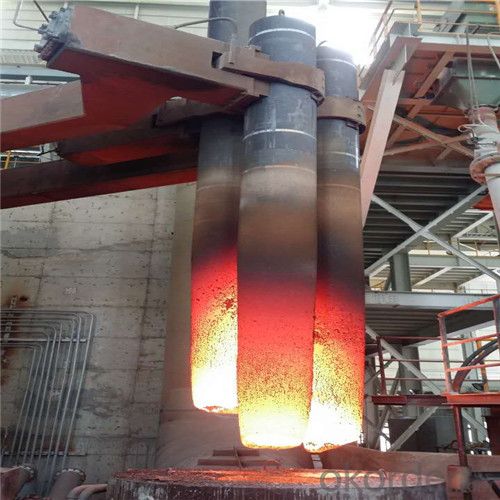
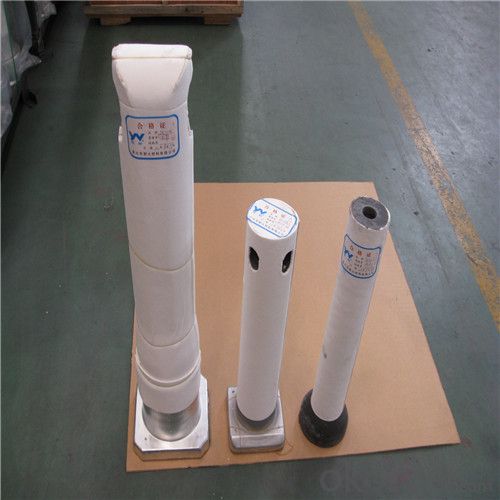
----------------------------------------------------------------------------------------------------------------------
diameter from 50mm to 600mm (2" to 24")
grades including RP, HD, HP, SHP, UHP.
Nipples: 3 TPI or 4 TPI.
----------------------------------------------------------------------------------------------------------------------
We have full set of production line for graphite electrodes.
Our products are characterized by superior compact structure, good electrical and thermal conductivity, high resistance to oxidation and corrosion in high temperature. The regular power graphite electrodes graphite electrodes for heavy industrial arc furnaces, steel mills, foundries, and other applications.
As one of the most professional graphite electrode manufacturers in China, passed ISO9001:2000 certified.
We're glad to quote you a most competitive price according to your specification.
----------------------------------------------------------------------------------------
Physical Properties | RP Grade (Dia.50-600mm) | HP Grade (Dia.50-600mm) | UHP Grade (Dia.50-600mm) | |
Electrical Resistance (max) μΩ-m | Electrode | <8.0< span=""> | <7.0< span=""> | <6.0< span=""> |
Nipple | 6.5 | 5.5 | 5.0 | |
Bending Strength (min) Mpa | Electrode | 11.0 | 12.0 | 12.0 |
Nipple | 14.0 | 14.0 | 16.0 | |
Elastic Modulus (max) Gpa | Electrode | 9.0 | 12.0 | 12.0 |
Nipple | 12.0 | 14.0 | 14.0 | |
Bulk Density (min) g/cm3 | Electrode | >1.58 | >1.65 | >1.68 |
Nipple | >1.70 | >1.72 | >1.73 | |
C.T.E (max) ×10-6/C | Electrode | 2.7 | 2.5 | 2.4 |
Nipple | 2.5 | 2.2 | 2.0 | |
Ash (max) % | Electrode | <0.30< span=""> | <0.30< span=""> | <0.20< span=""> |
Other products for your reference:
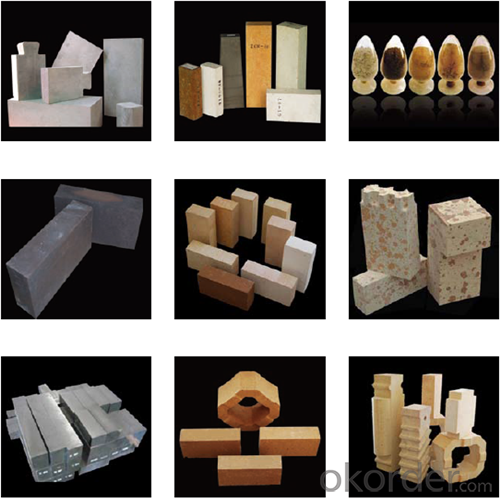
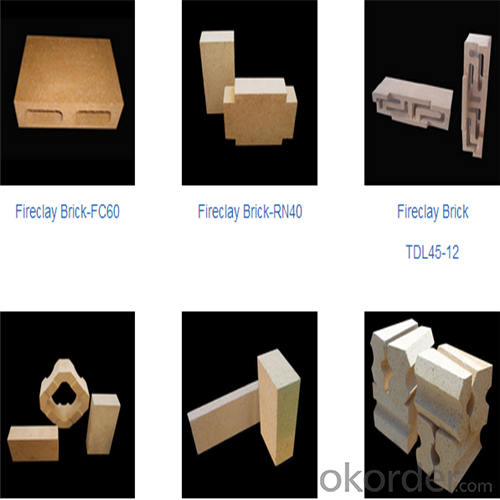

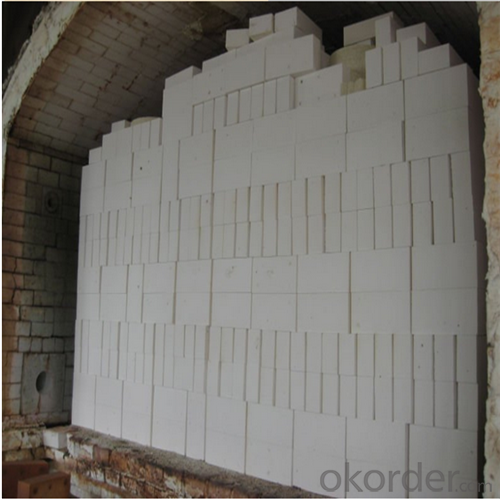
Our Team
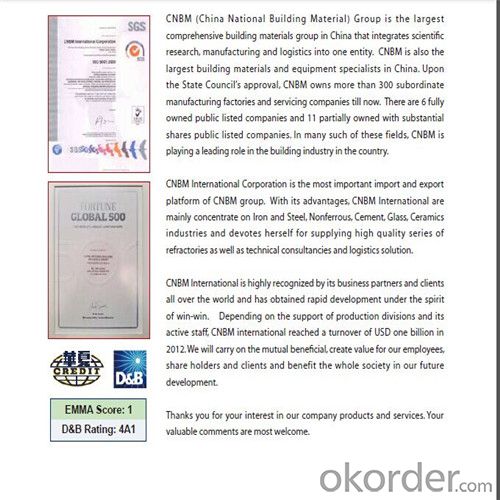
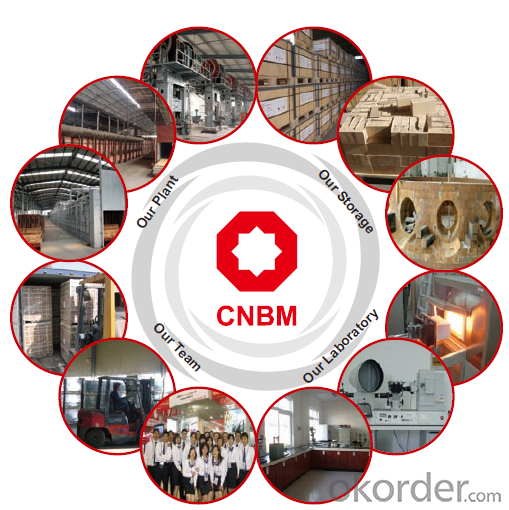
- Q: What is the striking electrode in the die making? Where is the technical point?
- Technology of EDM should master the characteristics of electric discharge between tool electrode and workpiece is not in direct contact, but there is a gap, the gap is generally between 0.05~0.3mm, sometimes may reach 0.5mm or more, full of fluid, processing by high voltage pulsed discharge, the discharge of corrosion the workpiece.
- Q: Where is the graphite electrode scrap?
- Atoms, ions, and electrons collide with each other in strong oscillatory motion to produce more electrons and ions.
- Q: The future of graphene
- Sensor domain. Graphene due to its unique two-dimensional structure is widely used in sensor, has the advantages of small size, large surface area, high sensitivity, fast response time, fast and easy electron transfer protein immobilization and maintained its activity and other characteristics, can improve the performance of sensor. Mainly used in the production of gas, biological molecules, enzymes and DNA electrochemical sensors. Singapore Nanyang Technology University developed a graphene light sensor sensitivity is 1000 times the ordinary sensor; the Rensselaer Polytechnic Institute developed performance than the existing commercial gas sensor cheap graphene sponge sensor.
- Q: What is the reason that the current cannot be increased when the graphite electrode is used for anode electrolysis?Add calcium chloride and sodium bicarbonate into electrolytic water
- The reason is that the resistance increases continuously, the number of ions is limited, and the conductivity is limited
- Q: Will the concentration of electrolytic sodium sulfite be increased with graphite as electrode?
- Not alwaysIt depends on the rate of electrolyzed water or the rate at which sodium sulfite is oxidized.
- Q: Synthesis techniques of carbon nanotubes
- The synthesis techniques of carbon nanotubes are mainly arc method, laser ablation (Zheng Fa) method, catalytic cracking or catalytic chemical vapor deposition (CCVD), and directional control growth method based on various synthesis techniques.
- Q: Which department in the steel plant needs graphite in large quantities?
- The variety and specifications of graphite electrodes used in modern EAF steelmaking are mainly determined by the technical parameters of the steelmaking furnace. With the development of EAF steelmaking technology, the steel-making technology is developing towards large scale and ultra high power. The graphite electrode is mainly made of large size graphite electrode and ultra high power graphite electrode.
- Q: Why should graphite paper be placed between the heater and the graphite electrode?
- Heater design, the common heater has three shapes, cylinder, cup, spiral, the vast majority of the current heater is cylindrical, as shown in figure. The spiral heater has complicated processing technology and has been eliminated. Cup shaped heater for hemispherical crucible, the bottom melt temperature is more uniform, because the processing technology is difficult, already no use. Nowadays, most of them use cylinder heaters. The cylindrical heater is not only easy to process, but also is related to the large number of flat crucible used in the direct drawing single crystal furnace.
- Q: The production of one ton of steel required graphite electrode
- Not sure, look at your such as what is charge, and your smelting level.If the proportion of molten iron to the furnace is high, then the electrode consumption is low, 0.7kg/t, or lower. If it's cold, 1-2kg/t.
- Q: Why is graphite a negative pole and copper is an anode?
- The process of causing a chemical change by passing through a substance. Chemical change is the process in which material is lost or obtained by electrolysis (oxidation or reduction). Electrolysis is performed in an electrolytic cell. The electrolytic cell is composed of two electrodes, yin and Yang, which are respectively immersed in the solution containing positive and negative ions. The current into the negative electrode (cathode), are positively charged ions migrate to the cathode solution, and with the combination of electronic elements, become neutral or negatively charged molecules; negative ion transfer to another electrode (anode), electrons are given into neutral elements or molecules.
Send your message to us
High Purity Industrial Graphite Electrode for Smelting Zinc 2024
- Loading Port:
- Shanghai
- Payment Terms:
- TT or LC
- Min Order Qty:
- 10 m.t.
- Supply Capability:
- 1000 m.t./month
OKorder Service Pledge
OKorder Financial Service
Similar products
Hot products
Hot Searches
